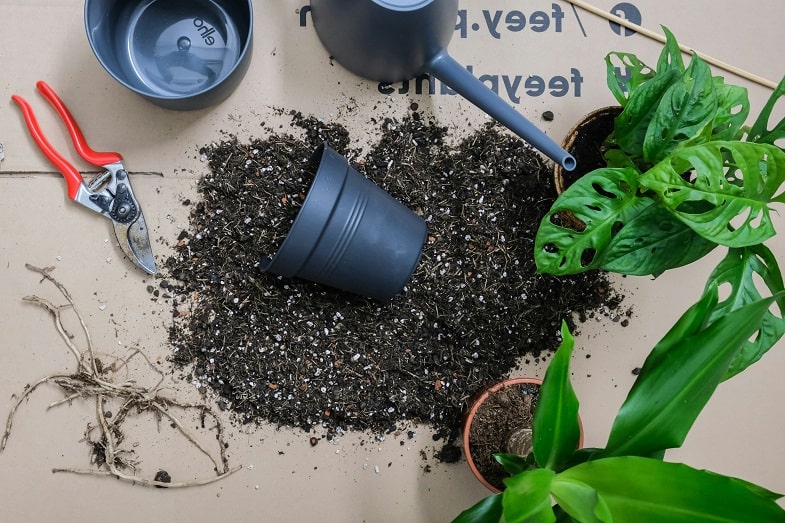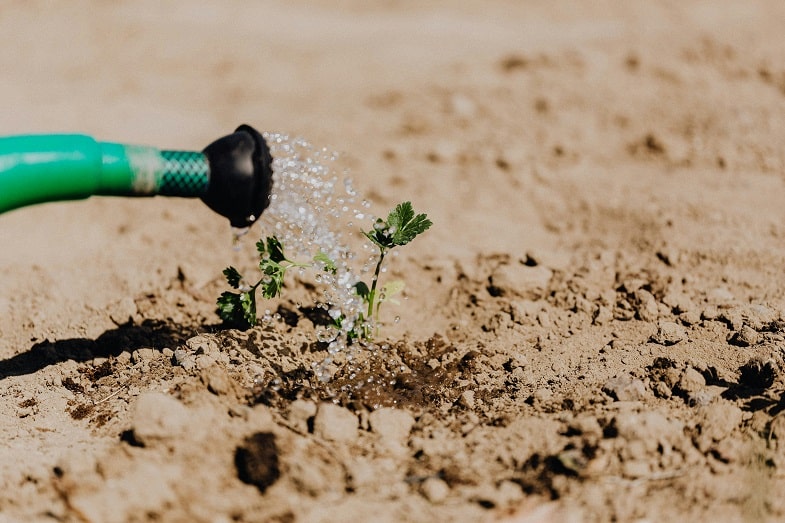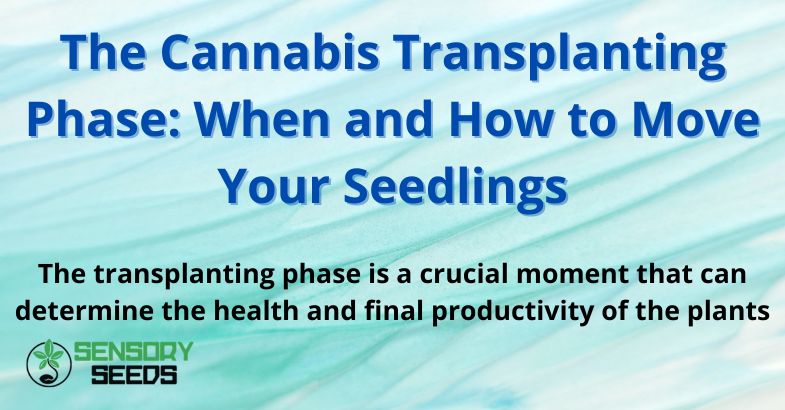Published on: 30/08/2024
The transplanting phase is a crucial moment that can determine the health and final productivity of the plants
Transferring a cannabis plant is not simply a mechanical operation of transferring it from one container to a larger one; it is a process that, if done correctly, can drastically improve root growth and flowering of cannabis seeds, the overall health of the plant, and ultimately the quality and quantity of the harvest.
When Is the Right Time to Transplant?
Identifying the right time to transplant cannabis plants is essential to avoid unnecessary stress. The optimal timing varies depending on the cannabis variety and specific growing conditions, but there are common signs that indicate when a plant is ready to be transplanted.
Generally, young cannabis plants should be transplanted when they have developed a robust root system but are not yet root-bound. This typically occurs about 3-4 weeks after germination, when the plant has reached a height of around 15-20 centimeters. A key sign that transplanting is needed is the appearance of roots emerging from the drainage holes of the current pot. This means the roots have filled the available space and need more soil to expand further.
Another indicator is slowed growth. If you notice that your plant is no longer growing at the same rate as before and the leaves begin to yellow, it could be a sign that the roots no longer have space to expand and absorb nutrients effectively. In this case, transplanting is necessary to provide the plant with the space and nutrients needed to continue growing vigorously.
Read also: What is the most powerful weed in the world? We have a winner!


Preparation for Transplanting
Before proceeding with the transplant, it’s important to prepare everything needed to ensure that the process is as smooth and stress-free as possible for the plant. You will need:
- A new, larger pot, preferably made of plastic or fabric, with adequate drainage holes.
- High-quality, well-draining soil enriched with perlite or vermiculite to improve aeration and drainage.
- Gardening tools such as a trowel, clean and sanitized scissors, and gloves.
The new pot should be large enough to allow the plant to grow freely for at least another 4-6 weeks without needing another transplant. Generally, it is recommended to use a pot that is at least twice the volume of the current one.
Soil is another crucial element. The ideal soil for cannabis is light, well-aerated, and rich in nutrients.
The Transplanting Process
Transplanting cannabis plants requires care and attention to avoid damaging the roots and stressing the plant. Here is a step-by-step guide on how to perform the transplant correctly:
- Hydration: Begin by lightly watering the plant in its current pot a few hours before transplanting. This will make the soil more cohesive and help remove the plant without damaging the roots.
- Preparation of the New Pot: Fill the new pot with the prepared soil, leaving a central space for the plant. Lightly compact the soil to prevent it from settling too much once watered.
- Removing the Plant: Gently tip the current pot while supporting the soil and plant with one hand. With the other hand, tap the bottom of the pot to loosen the soil and help the plant slide out. If the pot is plastic, you can also gently squeeze the sides to facilitate extraction.
- Root Inspection: Once the plant is out, inspect the roots. If they are very tangled, gently unravel them with your fingers. Remove any damaged or rotten roots using clean, sanitized scissors.
- Placing in the New Pot: Place the plant into the new pot and add soil around the roots, lightly compacting it. Ensure the plant is positioned at the same depth as it was in the previous pot to avoid burying the stem too deep.
- Watering: After transplanting, water the plant thoroughly to help the soil settle and the roots establish good contact with the new soil.
A well-executed transplant can positively impact the overall health of the plant, and consequently, the quality and quantity of the yield. Autoflowering cannabis seeds, in particular, are known for their resilience and adaptability to different environments, but careful transplanting can further enhance their performance.


Post-Transplant Care
Post-transplant care is just as important as the transplant itself. The plant will need time to adjust to the new environment and may show signs of stress, such as drooping or yellowing leaves. Here are some tips to ensure a quick recovery:
- Proper Placement: Place the plant in a well-lit environment but avoid direct sunlight for the first few days to reduce stress.
- Watering: Continue to water regularly but avoid over-saturating the soil. Excessively wet soil can suffocate the roots and cause rot.
- Nutrients: About a week after transplanting, start adding nutrients to the soil to support growth. Use balanced fertilizers specifically formulated for cannabis, such as those designed for autoflowering varieties, always following the recommended dosages.
Common Mistakes to Avoid
Transplanting cannabis plants may seem like a simple task, but there are several common mistakes that can compromise the health of the plant. Here are some errors to avoid:
- Transplanting Too Early or Too Late: Transplanting a plant too early can damage the still-fragile roots, while transplanting too late can stress the plant due to root crowding.
- Using Low-Quality Soil: Poor-quality soil can retain too much water or fail to provide the necessary nutrients, negatively affecting plant growth.
- Damaging Roots During Transplanting: Handling the roots too aggressively can cause damage that slows growth and makes the plant more susceptible to diseases.
- Overwatering: After transplanting, the roots may be more sensitive to excess water. Avoid watering too frequently to allow the roots to stabilize.
Read also: The Origin of Cannabis
In conclusion
Transplanting cannabis plants is a critical phase in the cultivation cycle that requires attention and care. Understanding when and how to transfer your seedlings can make the difference between a healthy, productive plant and one struggling to survive.
By following the guidelines outlined above, you can ensure that the transplanting process is as smooth as possible and that your plants have everything they need to grow strong and healthy.
Remember, patience and care are essential in cannabis cultivation; every step of the process contributes to the success of the final harvest.
To start growing your seedlings, purchase our high-quality seeds at SensorySeeds!









